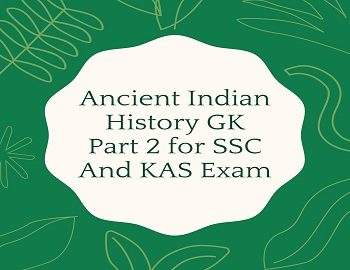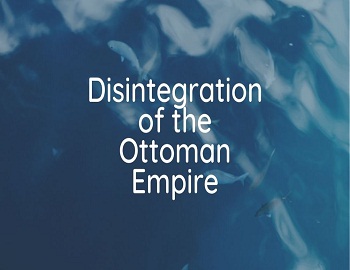By Gk Scientist
Oct 26, 2020
Ancient Indian History GK Part 2 for SSC And KAS Exam

Ancient Indian History GK Part 2 for SSC And KAS Exam:
- Who were the successors of the Vakatakas- Chalukyas of Badami.
- The rock-cut caves at Badami and Aihole have the figure of- Jain Tirthankaras.
- Which Jain Tirthankara’s name found in the Rigveda- Rishabha and Arishtanemi.
- The Vishnu Purana and the Bhagavat Purana describes which Jain Tirthankaras as an incarnation of Narayana-Rishabha.
- The Shaiva Saints were popularly known as- Nayanars.
- The Vaishnava Saints were popularly known as- Alvars.
- Who was the greatest scholar of Kashmir Shaivism- Abhinava Gupta.
- Who was the minister of Kalachuri king Bijjala of Kalyani- Basavaraja.
- The devotional poems written on Shiva by the Nayanar Saints are called- Devaram or Tevaram.
- The devotional poems written on Vishnu by the Alvars Saints are called- Divya Prabandham.
- Who was generally regarded as the founder of Virasaivism or Lingayat Cult in the 12th century A.D.- Basavaraja.
- Which sect of Buddhism is called the ‘Thunderbolt’- Vajrayana Sect.
- Which missionary monk from Nalanda went to Tibet to propagate Buddhism- Padmasambhava.
- The second Jain council was held at Valabhi under the leadership of- Devardhi Kshamasramana.
- Which Harappan site has yielded only square stamp seals- Chanhudaro.
- The animal most frequently encountered on Indus seals is- Unicorn or Humpless Bull.
- Who believed that the invading Aryans destroyed the Indus settlement and the Harappan cultural tradition- Mortimer Wheeler.
- Which Harappan site is called the ‘Mound of the dead’- Mohenjodaro.
- The site of Mohenjodaro was excavated by- R.D.Banerjee (1922).
- The majority of Harappan inscriptions are found on- Stone Seals.
- The main source of ‘Jade’ for the Harappans was- Central Asia.
- The figure of the God that was depicted in the seal of the Indus valley people is- Pashupati.
- The Indus valley people had trade relations with- Mesopotamia.
- Arthasastra of Kautilya is a comprehensive treatise on- State Craft and Public Administration.
- The Junagarh Rock Inscription was given by whom in A.D. 150- Rudradaman.
- Which edicts describe Asoka’s paternal concept of a monarchy- Edicts at Dhauli and Jaugada.
- Who Donate Barabara hills to the sect of the Ajivikas- Asoka.
- Rent-free village endowed to a temple was called- Devagrahara.
- The term ‘Khila’ is generally referred to as- Fallow Land.
- The term ‘Usara’ is generally referred to as- Barren or Salty Land.
- Hathigumpha inscription belongs to which king- King Kharavela of the Cheta Dynasty.
- Who introduced the Kshatrap system of administration in India- The Shakas.
- The office of ‘Amatya’ appears for the first time in- Satavahana Inscriptions.
- Who is the author of the work ‘Indica’- Megasthenes.
- Which sect of Buddhism is called the ‘Greater Vehicle’- Mahayana.
- The first epigraphical evidence of ‘Sati’ is obtained from- Eran Inscription (510 A.D.).
- Who is the author of Kamsutra- Vatsayana.
- Guptas were the feudatories of the- Kushanas.
- Samudragupta commander-in-chief during the southern campaign was- Virasen.
- Gandharvaveda deals with- Art and Music.
- Shilpaveda deals with- Architecture.
- Who has written Mahabharata- Ved Vyas.
- Who has written Ramayana- Valmiki.
- The Harappan script is written in which style- Boustrophedon.
- Kalibangan is found on the bank of which river- Ghaggar.
- The bronze image of a dancing girl with right hand on hip is found from- Mohenjodaro.
- The only Indus site with an ‘Artificial Dockyard’- Lothal.
- Lapi Lazuli was obtained by the Harappans from which place in Afghanistan- Badakhshan.
- Which port under the Pandayans became famous for the export of Pearls in the Post-Mauryan Age- Korkai.
- The school of art which is credited with the earliest creation of the image of the Buddha was- Mathura.
- Which school of art uses Black Stone for images- Gandhara.
- Amaravati School of art was patronized by- Satavahanas and Ikshvakus.
- The characteristic pottery type of the Gupta period is- Red Ware.









Comments (No)